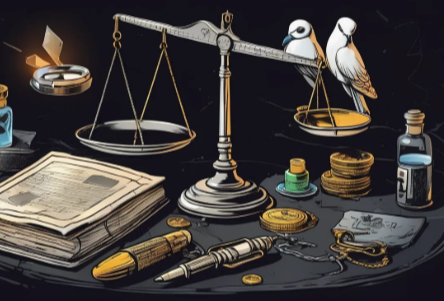The Dark Web presents a complex interplay of myth and reality. Often associated solely with illicit activities, it also provides a platform for privacy and free expression. Many misconceptions cloud its true nature, leaving users unaware of potential risks. Understanding these nuances is crucial for grasping the broader implications of digital rights in today’s society. As the conversation unfolds, it becomes apparent that the Dark Web’s significance extends far beyond popular belief.
Understanding the Dark Web: What It Is and How It Works
The Dark Web, often shrouded in mystery and misconception, refers to a segment of the internet that is intentionally hidden and inaccessible through standard web browsers.
Understanding dark web basics involves recognizing that specialized software, like Tor, is required for accessing the dark web.
This hidden realm offers anonymity, enabling users to share information freely, though it also conceals both legal and illicit activities.
Read more: The Future of Wearable Health Tech for Chronic Disease Management
Common Myths About the Dark Web Debunked
While many people associate the Dark Web exclusively with criminal activities, this perception oversimplifies its complexity and functionality.
Common dark web misconceptions include the belief that it solely hosts illegal content or that it guarantees anonymity.
Additionally, privacy myths perpetuate the idea that all users can operate without risk.
Understanding these nuances is essential for a more informed perspective on this often-misunderstood digital realm.
The Dark Web’s Role in Privacy and Freedom of Expression
Although often overshadowed by its association with illicit activities, the Dark Web serves as a vital platform for privacy and freedom of expression.
It provides essential privacy tools that enable individuals to communicate and share information without fear of surveillance. This anonymity supports digital rights, empowering activists, journalists, and whistleblowers in oppressive regimes to voice dissent and advocate for change.
Illegal Activities on the Dark Web: A Closer Look
Numerous illegal activities proliferate on the Dark Web, drawing significant attention from law enforcement and cybersecurity experts alike.
Drug trafficking remains a prominent issue, with anonymous marketplaces facilitating the exchange of illicit substances.
Additionally, hacking services are readily available, allowing individuals to exploit vulnerabilities in networks and systems.
These activities highlight the dual-edged nature of the Dark Web, presenting both risks and opportunities for those seeking freedom.
Conclusion
In conclusion, the Dark Web embodies a duality: a refuge for privacy and a marketplace for illicit activities. It challenges perceptions of anonymity while highlighting the risks involved. By understanding its complexities, individuals can navigate this digital realm with caution and awareness. As society grapples with issues of digital rights and freedom of expression, recognizing the Dark Web’s multifaceted nature becomes crucial for informed discourse, responsible engagement, and the protection of both privacy and security in the online world.



